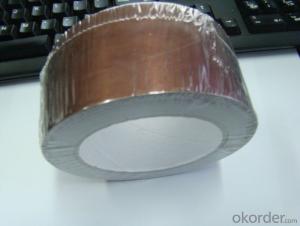Teflon Tape on PVC Threads: The Leak-Proof Seal
Let’s talk about something that might seem like a tiny detail but can make a huge difference in our lives – Teflon tape for PVC threads. It’s a simple, yet incredibly effective solution to one of the most common household problems: leaks. Whether you’re a DIY enthusiast or just someone who’s had enough of that dripping sound from the faucet, this article is for you.
The Basics of Teflon Tape
First things first, what exactly is Teflon tape? It’s a type of thread seal tape made from PTFE, or as most of us know it, Teflon. It’s a non-stick, heat-resistant material that’s perfect for creating airtight seals on pipes and valves. But why is it so special? Well, it’s all about the way it wraps around the threads of a pipe, creating a barrier that prevents leaks.
Why Choose Teflon Tape?
You might be wondering why you should choose Teflon tape over other sealing methods. Here are a few reasons:
– Non-Stick Surface: The non-stick nature of Teflon tape makes it perfect for preventing residue build-up and ensuring a smooth flow of water or gas.
– Durability: Teflon tape is durable and can withstand high temperatures, making it a reliable choice for long-term use.
– Easy to Use: It’s a no-brainer when it comes to application. Just wrap it around the threads, and you’re good to go.
– Cost-Effective: It’s an affordable option compared to other sealing materials, and a single roll can last you a long time.
How to Apply Teflon Tape Correctly
Now, let’s get to the fun part – applying the Teflon tape. Follow these simple steps for a leak-proof seal:
1. Clean the Threads: Before you start, make sure the threads are clean and dry. No dirt or grease should be in the way.
2. Cut the Right Amount: You don’t need much, just a couple of wraps. Cut a piece of tape that’s about 2-3 times the width of the pipe.
3. Wrap It Around: Start wrapping from the end of the pipe, making sure each layer is slightly overlapping the previous one.
4. Tighten the Connection: Once you’ve got your tape in place, it’s time to tighten the connection. Make sure it’s snug but not overly tight to avoid damage to the threads.
5. Check for Leaks: After everything is connected, give it a test run. If you hear that dripping sound, you might need to reapply the tape or tighten the connection a bit more.
Common Mistakes to Avoid
We’ve all been there – trying to fix something, only to end up causing more problems. Here are some common mistakes to avoid when using Teflon tape:
– Using Too Much Tape: Overdoing it with the tape can actually cause leaks. Stick to the recommended amount.
– Not Overlapping the Layers: Make sure each layer of tape overlaps the previous one for maximum seal effectiveness.
– Failing to Test: Always test for leaks after installation. It’s better to catch a problem early than to deal with a flood later.
When to Replace Teflon Tape
While Teflon tape is durable, it’s not indestructible. Here’s when you might need to replace it:
– Visible Wear and Tear: If you notice the tape is worn out or damaged, it’s time for a replacement.
– Repeated Leaks: If you’ve applied the tape correctly but still experience leaks, it might be time to consider a new tape.
– Long-Term Use: Over time, the tape can lose its effectiveness. Regularly inspect and replace as needed.
The Emotional Side of Leak-Proofing
Fixing leaks isn’t just about practicality; it’s also about the peace of mind that comes with knowing your home is secure. No more late-night trips to the basement to turn off the water because of a leak. No more worrying about water damage or high utility bills. It’s about reclaiming your space and your time.
In Conclusion
Teflon tape on PVC threads is a simple yet powerful tool in our quest for a leak-free home. It’s not just about the physical seal; it’s about the emotional seal too – the satisfaction of a job well done and the relief of knowing you’ve conquered a household nuisance. So, the next time you’re faced with a leaky pipe, remember the trusty roll of Teflon tape in your toolkit. It might just be the hero you need.

